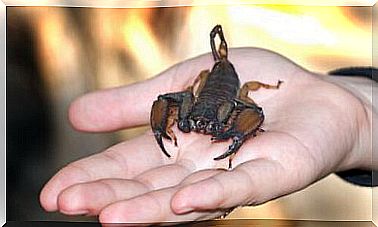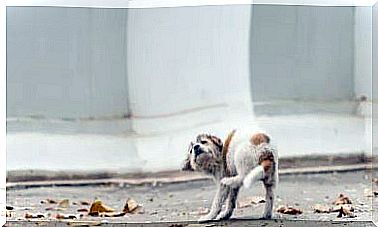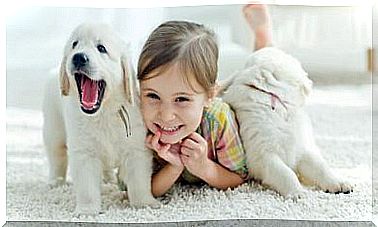Eye Infections In Dogs: Causes And Effects

Many organisms can cause eye infections in dogs. They can also arise from other systemic diseases that affect the eyes as well.
The eye is a very complex and delicate organ that can be easily damaged by small changes inside or outside the body.
It is therefore important that you maintain the health of your dog’s eyes by cleaning them daily with special products or saline solutions. You should also remove the “sleeping sand” that builds up over the course of the day.
In this article, we’re going to tell you what eye infections can occur in dogs , what causes them, and how they affect your pet. If you notice that your dog’s eyes are changing, it is important to see a veterinarian to determine the cause.

Ocular toxocariasis
Toxocariasis is a parasitic infection caused by the nematode Toxocara canis in dogs and humans. So it is a zoonosis.
A dog becomes infected with toxocariasis when eating meat or foods that are infected with eggs from this parasite. As soon as the eggs reach the intestines, they penetrate the intestinal wall and reach the liver via the blood.
However, sometimes they can cross the liver barrier and reach the brain, where they can cause meningitis or affect the eyes.
When this happens, a single larva is enough, which can destroy various structures of the eyeball. This results in granulomas and chronic endophthalmitis, an inflammation of the tissue inside the eye.
Eye infections in dogs: conjunctivitis
Conjunctivitis is one of the most common problems in veterinary clinics. In most cases, it is caused by eye infections in dogs. These infections can be viral, bacterial, or even an allergic reaction.
The conjunctiva is a translucent and very thin layer that covers the eye and the inside of the eyelids. Because of its properties, this fabric will not be visible unless a problem arises. The most common symptoms of conjunctivitis are:
- The sclera, the white part of the eyeball, turns red from the increased blood flow .
- This leads to excessive lacrimation.
- There can many greenish colored “sand grains” occur.
- The dog cannot open the eye. This is due to the pain the inflammation is causing.
- The eyelids appear inflamed in what is known as blepharitis.
- In addition, the eye is much more sensitive to light.

Immune-mediated conjunctivitis in dogs
Occasionally, conjunctivitis can also be immune-mediated and race-dependent. The breeds most affected include the German Shepherd, the long-haired dachshund, and the miniature poodle.
In these dog breeds, plasma cells can penetrate the nictitating membrane, also known as the “third eyelid”, and cause blepharitis.
Eye Infections in Dogs: Canine Ehrlichiosis
Canine Ehrlichiosis is a disease caused by Ehrlichia canis bacteria that can be transmitted by infected ticks. This disease can be fatal as it primarily affects the blood, its components, and the immune system.
The main symptoms that can be seen on analysis are anemia and leukopenia, or a decrease in white blood cells.
Most dogs develop eye and eyelid inflammation during the outbreak and subsequent development of the disease. Finally, the disease also affects other areas of the eye, such as the retina. This causes pain and severely affects your dog’s eyesight.
Eye worms
Canine thelaciosis is caused by the worm Thelazia callipaeda . This parasite is native to Asia but has already reached several regions in Europe.
Both the adult form of these parasites and the larvae live in the eyeballs of domestic carnivorous animals (cats and dogs) and wild predators. They are transmitted by arthropods.
These worms can cause varying degrees of damage in the eyes of animals:
- Excessive lacrimation.
- Conjunctivitis.
- Inflammation of the cornea of the eye.
- Epiphora, or obstruction of the tear ducts.
- Edema, swelling, or excessive fluid in the eyelids.
- Corneal ulcers.
- Blindness.
If you notice any changes in your dog’s eyes, you should see a veterinarian immediately so they can initiate the necessary treatment. This will ensure that your four-legged friend will soon feel better again and that he will not suffer any permanent damage.









